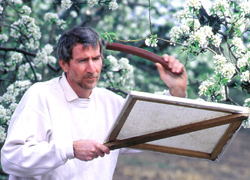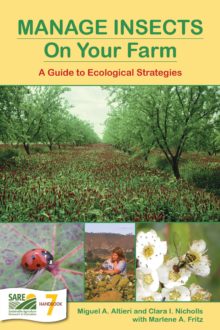
Reduce Mowing Frequency to Increase Beneficials
Tree fruit growers seeking alternatives to broad-spectrum pesticides are looking to manage insect pests using a more environmentally friendly approach. In Washington state pear orchards, SARE-funded research has found that mowing once a month rather than two or three times a month creates alluring habitats for beneficial insects.
An ARS researcher partly funded by SARE ran trials at three orchards and varied mowing frequency (weekly, monthly and just once a season). With less frequent mowing, the natural enemies moved into the ground cover in greater numbers, likely attracted to the pollen and nectar newly available from flowering plants as well as more abundant prey, such as aphids and thrips. Researcher Dave Horton found more lacewing larvae, spiders, ladybug beetles, damsel bugs, parasitoids and minute pirate bugs. “If you mow a lot, you won’t have much in the way of natural enemies on the ground,” Horton said. “By reducing the frequency to once a month, you see a dramatic increase in natural enemies moving into the ground cover without a big increase in pests that feed on fruit.”
Questions remain whether the predators migrate from the ground cover into the pear trees to attack orchard pests, although evidence supports that some predators, especially spiders, appeared in higher numbers in pear trees in the less frequently mowed plots, good news for pear growers.
One of Horton’s farmer collaborators, who received a SARE farmer/rancher grant to study similar ways to manage orchard pests, is convinced that minimal mowing provides control. “I’m practicing this, and I’ve never had to spray for mites,” said George Ing of Hood River, Ore., who has a 16-year-old orchard. “Other orchards that are conventionally treated have more pests. I’m convinced it helped.” At the behest of area growers, who provided a research grant through their pear and apple association, Horton will test how seeding cover crops such as white clover between tree rows affects populations of both pests and pest predators.
